Detecting and Removing Tramp Metal from Conveyors

First published in the April 2019 issue of Quarry Management as Magnetic Attraction
Bunting Magnetics discuss the detection and removal of tramp metal from conveyors
The process of quarrying aggregate materials often results in the introduction of tramp metal. The effective detection and removal of this metal is critical to prevent damage to crushers, screens and conveyors, and is achieved using metal detectors and magnetic separators.
Bunting Magnetics are one of the world’s leading designers and manufacturers of magnetic separators and metal detectors for the quarrying, mining and recycling industries. Their wide range of metal separation and detection equipment is manufactured at the company’s Master Magnets facility, in Redditch, just outside Birmingham.
The design of a metal detector or magnetic separator is dependent upon the application. Understanding the nature (eg size, shape, composition, origin) of the tramp metal is important. Typical tramp metal can include digger teeth, drill rods, crusher plates, bars, chains, nuts and bolts. A review of the plant layout, identifying critical machinery at risk from tramp metal, highlights potential locations for detection and separation equipment. Once the application details are known, it is possible to recommend an optimum solution to detect and or remove the tramp metal.
Metal detection
Metal detectors are available in a wide variety of designs but they all operate using the same basic principle. Inside a metal detector is a coil which, when electricity is passed through it, produces a magnetic field. This magnetic field is stable until the introduction of a metal particle or fragment. The subsequent change in the magnetic field is recognized by a control panel.
In a quarry or mine, metal detectors are commonly located underneath or around a conveyor belt. When tramp metal enters the magnetic field of the detector, the control panel either stops the conveyor or can divert the contaminated product flow.
Master Magnets manufacture three designs of metal detector for the quarrying and mining industry. All three types provide an automatic and continuous inspection of all conveyed materials that are non-metallic or non-conductive. Their design means that all three types can be fitted without cutting the conveyor belt. The wall-mounted control panels are all rated to IP65. The three designs are:
QTA conveyor belt metal detector
The QTA provides basic detection of all tramp metals, whether they are ferrous, non-ferrous or manganese steels.
QDC conveyor belt metal detector
The QDC detects larger and smaller items of metal contamination, from large pieces of channel iron or bolts, down to pieces of swarf and wire. This model is commonly used in the coal and cement industries, where finer materials are handled.
TN77 conveyor belt metal detector
The TN77 is a tunnel-type design that detects tramp iron and low-grade manganese steel. This design ignores non-magnetic copper alloy conveyor belt fasteners. The control panel also indicates if one or two pieces of tramp metal have been detected simultaneously.
Magnetic separators
Whereas metal detectors can identify all tramp metal objects, magnetic separators only attract and remove magnetically susceptible ferrous metal. Magnetic separators and metal detectors are commonly used together. Tramp ferrous metal is removed by the magnetic separator and then non-ferrous metal (eg manganese steel) is identified by the metal detector.
The most commonly used designs of magnetic separators include the overband magnet and the pulley magnet.
Overband magnet
The overband magnet has a magnetic field produced by permanent magnets or an electromagnetic coil. When the overband magnet is suspended above a conveyor, the magnetic field is projected down into the conveyed material. Tramp iron passing into the magnetic field is attracted up off the conveyor and away from the burden of material.
Permanent overband magnets are an industry standard, featuring in quarries and on mobile screens and crushers. Electro overband magnets are heavier-duty units and are used when conveyors are transporting high tonnages of material. The electro designs produce deeper and stronger magnetic fields. Both the permanent and electro designs can be supplied with and without self-cleaning gear.
Pulley magnet
A permanent pulley magnet replaces the head pulley of a conveyor. A magnetic field is projected up through the conveyor, continuously attracting any tramp metal in the conveyed material. The tramp metal is held to the conveyor belt by the magnetic field before being automatically removed when the conveyor belt leaves the surface of the pulley.
Good protection means less downtime
Installing the optimum metal detector and magnetic separator ensures the protection of critical process equipment, as damage to crushers, screens and conveyors is not only inconvenient and time-consuming, but also costly in terms of downtime and missed production. For further information on removing tramp metal from conveyed materials, visit: www.buntingeurope.com
- Subscribe to Quarry Management, the monthly journal for the mineral products industry, to read articles before they appear on Agg-Net.com



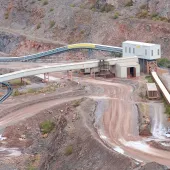
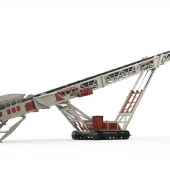
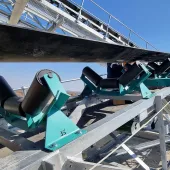
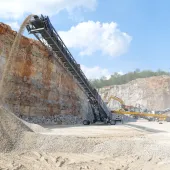
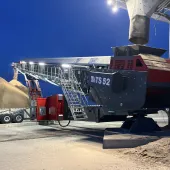
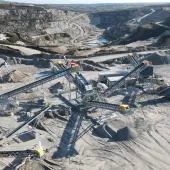

- Reply
Permalink